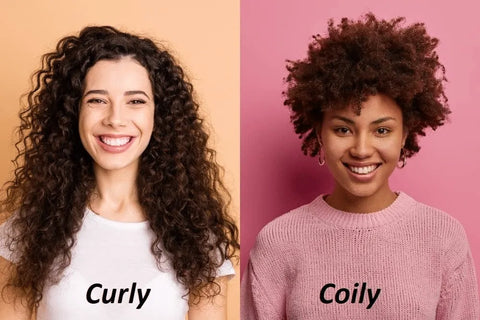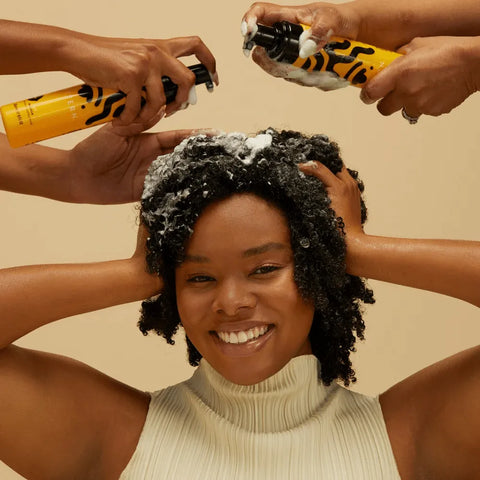Do you often ask “What type of hair do I have?” on different platforms? Yes, whether you need to introduce your hairstyle to others or find a more suitable care method, it requires confirmation of your hair type and characteristics. Here is the ultimate guide to curly and coily hair to give you a fuller understanding of the different curls.
What’s Coily Hair?

Coily hair is often called type 4 hair, which is tightly curled in a "Z" shape on the top of the head and has elasticity and volume.
What Type of Curly Hair Do I Have?

Curly hair is a general term for all hair with curvature. It is defined as any hair from type 3 to 4. It is used to describe the texture of hair. Coily hair is also a type of curly hair.
If you want to understand your hair type more intuitively, here is a detailed hair types chart, I hope it can help you.
Coily VS Curly Hair, What’s the Differences Between Them?

The two of them have an inclusive relationship. When your hair is any one of 3a to 3c, you can call your hair curly hair, but when your hair is any one of 4a to 4c Sometimes it is often called coily hair in addition to curly hair.
Curly hair can be loose waves, thick like corkscrew curls, or thick and tight curls. The coily hair is tighter and more elastic. Although it sometimes has an "S" shape, its circumference is much smaller than type 3, while the 4c coily is thick and densely curled. If your hair is in a coily, you must pay attention to daily care, because it is relatively fragile and prone to breakage.
How To Get Coily Hair?
If you don't have naturally coily hair but want to achieve this look, you can follow your hairstylist's lead and get it. Use a very small barrel-shaped curling iron or chopsticks to curl your hair, use a hair dryer to dry your hair, and finally remove the styling tool. Note: The smaller the diameter of the tool you choose, the curlier the coily hair will be.
How To Get Curly Hair?
If you have naturally straight hair, there are two ways to achieve curls, with and without heat.
You may choose to work on your hair with foam rollers, buns, and curling clips, but you may get better results by applying a curl-defining gel before doing so.
Heat styling tools have to be the best solution. Use a moisturizing shampoo, conditioner, and other products to condition and protect your hair before applying heat. Start styling using a curling iron with the size of curls you want.
How To Take Care of Coily/Curly Hair?

Although many people's definition of coily hair is that it is prone to dryness and breakage, everyone's hair porosity is different, and fully understanding the characteristics of your own hair is an important prerequisite for hair care. Check here and you will see that high porosity hair tends to dry out but low porosity hair tends to stay moisturized. If your curly hair is very dry and you want to keep it moisturized and bouncy, here are just a few ways to protect your hair:
1. Try hair oil.
Apply hair oil evenly to your natural hair while it's still semi-moist. This will help repair your hair and make it look bright and healthy.
2. Help hair lock in moisture better.
The direct solution to dry hair is to replenish it with enough moisture. Using a sulfate-free shampoo can better replenish moisture for your fluffy hair.
3. Avoid using products containing mineral oil.
If you have a low-porosity hair type, mineral oil will double as a barrier to moisture, making your hair brittle and dry, which is also bad for your scalp.
4. If your hair is easily tangled, try not to comb it before washing your hair.
You can gently comb your hair with your hands while using conditioner to reduce hair breakage.
5. Use cold or warm water to clean.
Use warm or cold water to wash your hair, as cold water seals the cuticle and helps your hair retain moisture and shine. Hot water does exactly the opposite.






